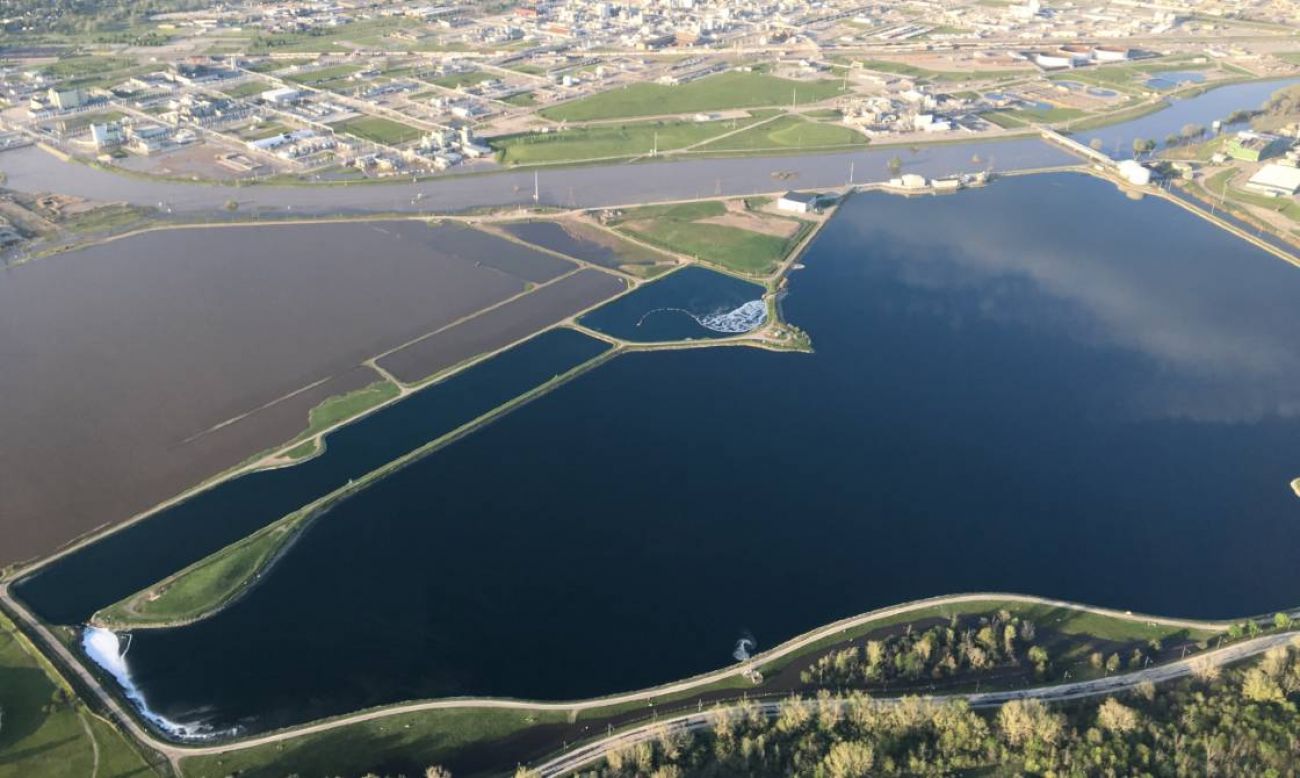Report: Climate change threatens these 29 Michigan chemical sites

Climate change is likely to bring more catastrophes to Michigan, and a new federal report warns that 29 sites that use hazardous chemicals are in the pathway of worsening floods driven by a changing planet.
The sites include a plastics manufacturer in Wyandotte, a sewage treatment plant in Jackson, an ice-cream maker in Ludington and a petroleum fuel terminal in St. Clair, according to a recent federal report that reviewed climate risks throughout the nation.
Climate change threatens Michigan chemical sites
Federal auditors say these 29 Michigan sites, which make, use or store potentially harmful amounts of extremely hazardous chemicals, are in the pathway of flood hazards that are worsening as the globe warms. Information about how each facility plans for potential emergencies is available by appointment at a federal reading room.
Source: U.S. Environmental Protection Agency
The report did not consider whether any particular site had adequate safeguards to protect against floods, fires and other hazards, but authors warned that, in general, industry and regulators must do a better job of protecting those sites from worsening weather extremes.
Related:
- What Michigan can do as global report details ‘closing window’ on climate
- Four ways Great Lakes winters are changing as scientists search for clues
- Activists push Michigan for bolder, faster climate efforts
The Government Accountability Office, a federal watchdog agency, mapped 10,400 sites nationwide that make, use or store “extremely hazardous chemicals.” The report found that almost a third are in areas vulnerable to wildfires, storm surges, floods or other natural hazards that are growing worse.
Michigan, with its comparative dearth of natural disasters, fared far better than coastal states, where rising seas threaten refineries and chemical plants, and some other Midwestern states vulnerable to catastrophic river flooding.
Water is the driving the threat in Michigan, as seasonal floods become more extreme and frequent as the globe warms, leading to devastation such as last summer’s metro Detroit floods.
Michelle Hurd Riddick knows well the risks that emerge when high-velocity floodwaters combine with hazardous chemical sites.
Riddick, a member of the Bay City-based Lone Tree Council environmental group, spent decades sparring with Midland-based chemical manufacturer Dow Chemical over how best to clean the company’s toxic contamination in the Tittabawassee and Saginaw rivers, and prevent future pollution.
Then came catastrophic flooding in mid-Michigan in May 2020, and a dam break that sent water surging downstream, flooding Dow’s containment ponds.
Riddick was relieved to learn that Dow’s flooded brine pond released no hazardous chemicals, and contaminated river sediment remained largely undisturbed. But Dow, which has invested heavily in flood control to protect its facilities, isn’t the only industrial site in the floodplain. And a plane ride over the landscape revealed widespread flooding at industrial compounds and junkyards throughout the region.
“There are landfills and abandoned industrial sites along (the Saginaw River and tributaries),” Riddick said. “Look at General Motors — they have major facilities that are closed down along the river. You've got foundries on the river. So you know, everything is in this floodplain.”
The federal report comes as auditors call upon the EPA to order better protections against climate risks at hazardous sites.
EPA advises industry to consider natural disasters in their plans for preventing chemical releases. But it’s not a requirement, and the guidance says nothing about how facilities should prepare for hazards tied to climate change.
A spokesperson for BASF, a chemical company whose Wyandotte polyurethane and plastics manufacturing facility is on the list of sites in the pathway of climate hazards, said in a statement that the company already monitors weather conditions and takes pains to protect its facilities and surrounding communities.
“Each BASF site follows a weather response plan for potentially severe weather conditions including those that could produce flooding conditions at the Wyandotte site,” said company spokesperson Marika Diamond. “The plans include detailed processes and procedures to mitigate potential damage at facilities and ensure products are safe and secure.”
Spokespeople for multiple other facilities named in the federal report declined to comment or did not respond to calls and emails from Bridge.
As with many climate risks, the danger at those sites falls unevenly on the poor and minorities. A 2018 EPA analysis found that communities within a mile of facilities that use extremely hazardous substances had 10 percent more low-income people and 11 percent more minorities than the national average.
Paul Mohai, a professor at the University of Michigan School for Environment and Sustainability who has extensively studied the uneven toll of environmental hazards in Michigan, said the report is more evidence that environmental laws and policies don’t protect those who live close to industry.
Three of the sites that federal auditors flagged for flood risks are in River Rouge, an industrial community south of Detroit that’s already burdened by air and water pollution.
Industrial areas like River Rouge, with their lack of porous soils and shade trees and abundance of asphalt, are also vulnerable to climate hazards such as heat and flooding.
The report underscores how those two hazards can magnify one another, creating a “triple-whammy” of health risks, said Mohai, who sits on a state environmental justice advisory council.
He said state and federal policies need to change to better account for those compounding effects.
“We have a lot of policies on environmental justice,” Mohai said, “but unless you can show on-the-ground changes, on-the-ground improvements, I don’t see them being much more than declarations of good intentions.”
Chemical releases caused by natural hazards are rare. Auditors found that just 2 percent of 1,500 reported releases over the past five years were caused by natural hazards.
“But we know from the experts, and from studies, that these natural hazards are going to become more frequent and more intense with climate change,” Alfredo Gomez, a Government Accountability Office director who oversees environmental protection audits.
“So then the question is, well, how well prepared are these facilities and EPA?”
Government auditors have called for change, and the EPA appears poised to comply.
After a Trump-era rule change that relaxed accident prevention planning and public disclosure requirements on industry, the EPA under President Joe Biden has announced plans to reconsider the rule with an emphasis on addressing climate concerns.
Gomez said federal auditors are now reviewing the capacity of sewage treatment plants, federally-operated levees and other facilities to absorb worsening floods tied to climate change.
At the state level, regulators are taking steps to better incorporate climate hazards into regulations, such as by using more up-to-date flood data when scoping out the size of sewer pipes and treatment plants, said Phil Argiroff, an assistant director in the Michigan Department of Environment, Great Lakes and Energy’s water quality division.
The state’s sewer systems, Argiroff said, “were designed to 20th century requirements, but we're now seeing 21st century rainfall. We need to address it.”
Michigan Environment Watch
Michigan Environment Watch examines how public policy, industry, and other factors interact with the state’s trove of natural resources.
- See full coverage
- Subscribe
- Share tips and questions with Bridge environment reporter Kelly House
Michigan Environment Watch is made possible by generous financial support from:
Our generous Environment Watch underwriters encourage Bridge Michigan readers to also support civic journalism by becoming Bridge members. Please consider joining today.
See what new members are saying about why they donated to Bridge Michigan:
- “In order for this information to be accurate and unbiased it must be underwritten by its readers, not by special interests.” - Larry S.
- “Not many other media sources report on the topics Bridge does.” - Susan B.
- “Your journalism is outstanding and rare these days.” - Mark S.
If you want to ensure the future of nonpartisan, nonprofit Michigan journalism, please become a member today. You, too, will be asked why you donated and maybe we'll feature your quote next time!






